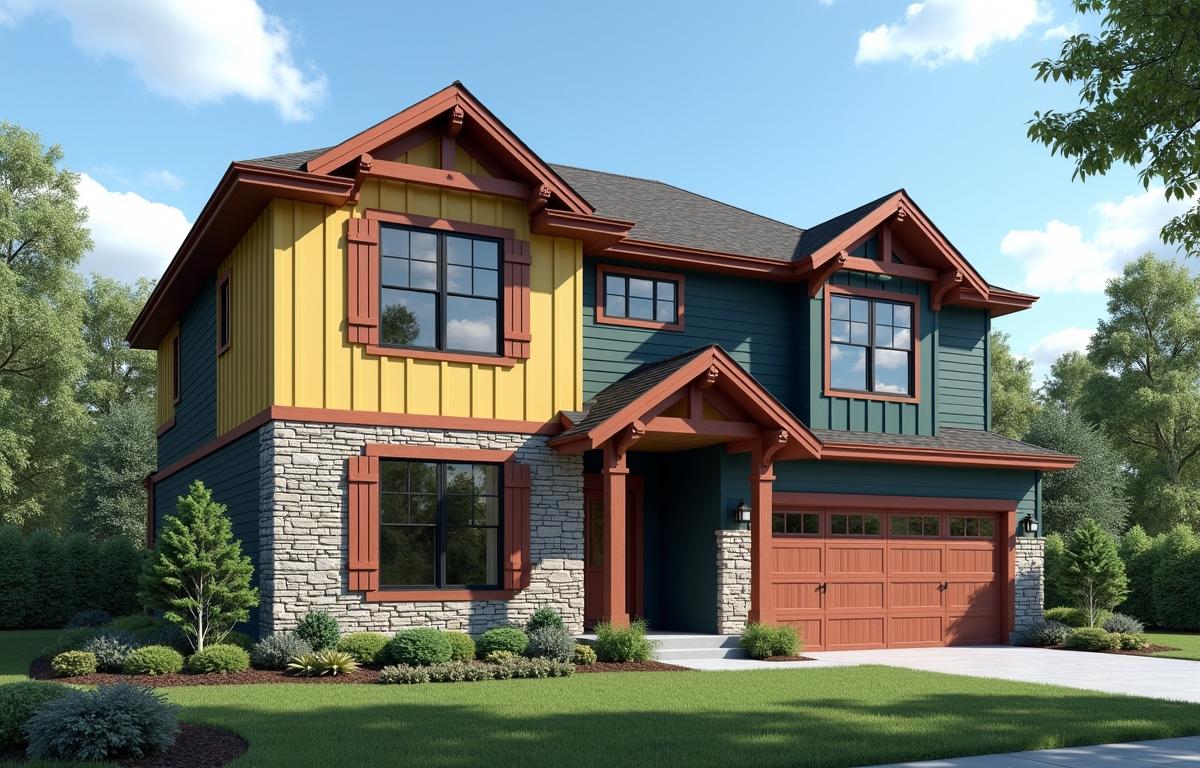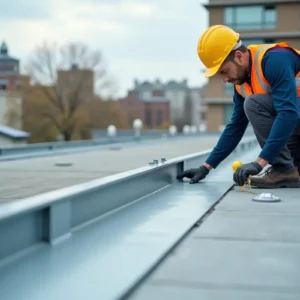Choose exterior paint with care if you want a beautiful home that can withstand the test of time. The right product not only enhances curb appeal but also protects your home’s exterior surfaces from harsh weather. Whether you’re working on a fresh build or updating an older façade, focusing on longevity and resilience will help you select a coating that looks great for years. Below, you’ll find practical pointers to guide you through choosing a paint that balances style, sustainability, and budget.
Contents
- 1 Essential Factors for Durability
- 2 Best Exterior Paint Colors and Weather Resistance
- 3 Different Paint Finishes for Exterior Surfaces
- 4 Eco-Friendly Options and Cost Considerations
- 5 Application Tips for Long-Lasting Results and Maintenance
- 6 Exterior Paint Maintenance for Continued Protection
- 7 Balancing Performance and Style
Essential Factors for Durability
Exterior paint durability depends on several factors, including the paint’s composition and the environment it must endure. A high-quality exterior paint primer supports better adhesion, helping the color layer remain intact through seasonal temperature shifts. Look for paint labeled as weather resistant paint since it usually contains extra binders that protect against moisture and UV rays.
Color retention is another vital quality. Fade resistant exterior paint can save you from frequent touch-ups, especially if your region gets intense sunlight. Some exterior paint brands specifically formulate their products to resist UV damage, which keeps your home’s color palette vibrant for longer. This consideration is essential if you’re intrigued by bold reds, blues, or other bright hues.
Choosing Based on Surface Type
Your home’s building material strongly influences the paint you should choose. Exterior paint for wood siding typically has a flexible formula that adapts to the surface as it expands or contracts with temperature changes. Meanwhile, exterior paint for metal surfaces needs rust-inhibiting additives to stop corrosion. Masonry paint choices address the porous nature of stucco, brick, or concrete walls, ensuring a breathable yet protective layer.
Best Exterior Paint Colors and Weather Resistance
Selecting the most attractive shade often involves browsing color palettes for exterior walls. Softer neutrals can deflect some heat, while darker shades add depth but might show fading sooner. If you live in a hot or sunny climate, UV protection paint helps maintain vibrant pigments. In areas with high humidity or rainfall, quality exterior paint designed for moisture control keeps surfaces dryer and more resistant to mold.
Matching Color to the Environment
Environment plays an important role in color selection. Homes near coastal regions need paints that fight salt-air damage, while mountain or desert homes require emphasis on resisting extreme temperature swings. Checking local paint finishes for exterior performance reviews can help ensure you pick a shade and brand that stands strong year-round.
Trim and Accent Considerations
Don’t forget about trim and accent colors. Subtler hues can bring balance if your main wall color is bold, while bright trim can enliven a neutral backdrop. A cohesive exterior house paint scheme often pairs two or three complementary tones. If you’re unsure, test small sections with sample cans to see how they appear in different lighting conditions.
Different Paint Finishes for Exterior Surfaces
Beyond color, finishes affect not just appearance but also performance. High-gloss paints provide a rich shine, which can highlight architectural details, but they also emphasize surface imperfections. Satin finishes balance a slight sheen with decent durability, making them a popular choice for wood siding paint. Flat or matte finishes hide flaws but might not clean as easily, so consider where dirt or moisture is a concern.
Balancing Aesthetics with Function
Think about foot traffic, exposure to elements, and how you’ll maintain the newly painted surface. If you have children or pets, a more washable finish may be appealing for porch or patio areas. On the other hand, a matte finish can feel more modern if the surface is smooth and blemish-free.
Eco-Friendly Options and Cost Considerations
For homeowners seeking an eco-friendly exterior paint, water-based acrylics often emit fewer volatile organic compounds (VOCs). These paints safeguard indoor and outdoor air quality while providing respectable durability. Some newer formulas combine natural pigments with plant-based resins for an even greener choice.
Budgeting Wisely
The cost of exterior paint can vary depending on quality, brand reputation, and local availability. Though budget paints have an initial price advantage, they might need more frequent repaints due to inferior binders or pigments. On the other hand, premium paints deliver better coverage and last longer, possibly reducing the total cost of exterior painting over time. Evaluate how often you expect to repaint and whether a slightly higher upfront investment is worth fewer touch-ups down the road.
Application Tips for Long-Lasting Results and Maintenance
Proper application methods ensure that even the best paint for outdoor furniture or house walls achieves maximum durability. Start with thorough paint preparation. Clean and repair surfaces, removing loose paint and sanding rough patches. In the case of stucco paint options or masonry paint choices, addressing cracks and gaps is crucial. For wood surfaces, scrape away peeling sections and ensure the boards are dry before proceeding.
The Role of Primer
An exterior paint primer is indispensable if you’re painting bare surfaces or switching from dark to light colors. The primer locks in stains, enhances paint adhesion, and creates a uniform substrate. This base layer helps reveal the paint’s true color while boosting the coating’s longevity. Some paint types for exterior use come as paint-and-primer combos, though separate primers can still offer better coverage in challenging conditions.
Painting Tools and Techniques
Painting tools and equipment play their part in achieving a flawless finish. High-quality brushes apply paint smoothly around corners and trim, while roller systems cover extensive areas efficiently. When painting large surfaces in direct sunlight, work in smaller sections to avoid lap marks and ensure even coverage. Always follow each product’s guidelines for drying times, recoat intervals, and temperature restrictions.
Exterior Paint Maintenance for Continued Protection
Even the most robust paint finishes benefit from regular care. Exterior paint maintenance includes washing away dirt, mildew, or salt deposits that may accumulate. A yearly rinse with mild detergent can prolong your paint’s appearance and functionality. If you notice chipped or cracked areas, fix them promptly to prevent moisture intrusion.
Seasonal Inspections
Perform seasonal inspections to identify signs of wear. For instance, look for corrosion on fences or metal railings if you used exterior paint for metal surfaces. Examine wood siding for peeling or warping. Early intervention, like spot repainting, protects your home before small issues escalate into expensive repairs.
Updating Color Trends
Over time, you may be tempted by new paint color trends. Updating your front door, shutters, or trim can freshen the look of your property without the expense of repainting the entire exterior. Small changes can keep your home’s aesthetic current without becoming a major project.
Balancing Performance and Style
Whether you’re sifting through exterior house paint ideas to transform your façade or hunting for the best exterior paint brands, find a product that fits your style and climate. Seek out weather-resistant paint if you live in a region with heavy rainfall or snow. If you’re painting outdoor furniture, confirm the formula can handle daily use. And if you’re leaning toward an eco-friendly exterior paint, confirm that it still offers paint durability and good coverage.
Time spent researching paint finishes, surfaces, and color palettes for exterior walls will reward you with a brilliant, long-lasting paint job. Use testers to refine your choice and follow proper application tips to protect your investment. By combining attention to detail with high-quality materials, you’ll enjoy a striking exterior that stands up to whatever nature sends its way.





